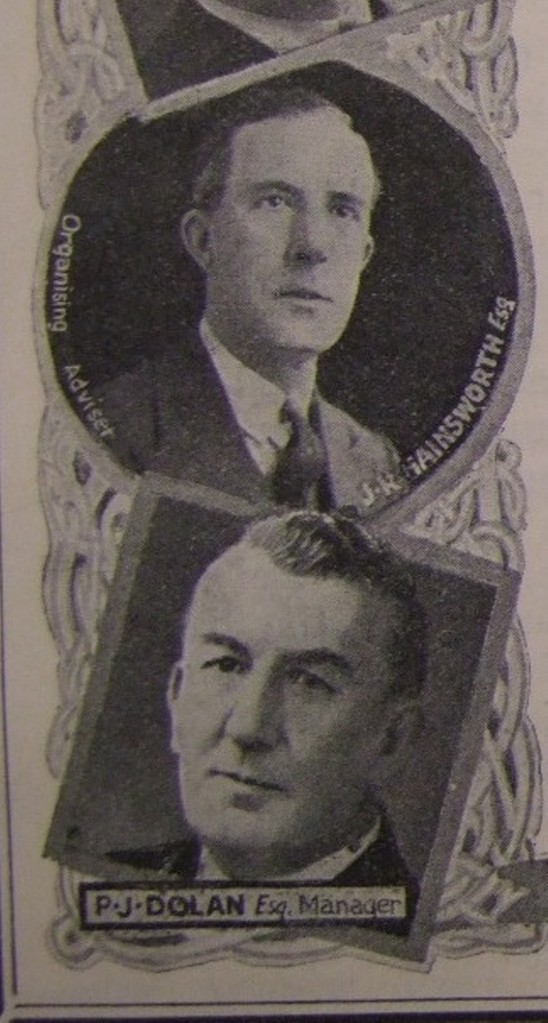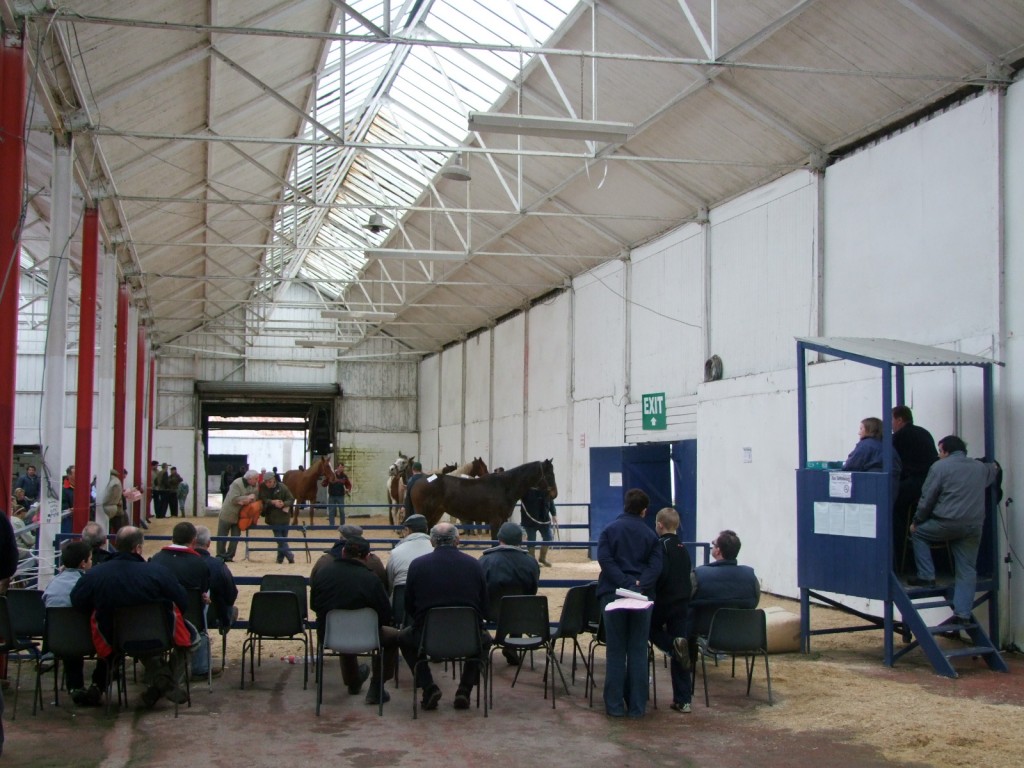
Kieran’s Our City, Our Town,
Cork Independent, 24 February 2011
In the Footsteps of St. Finbarre (Part 249)
A Disappearing Memory
Following the laying of the foundation stone of Cork City Hall on 9 July 1932 and the luncheon that followed, Eamonn DeValera travelled by motor car to the Irish Industrial and Agricultural Fair on the Straight Road. He was greeted by Mr. P.J. Dolan, manager of the Fair and Mr. J.R. Hainsworth, organising manager.
DeValera was eager to inspect the agricultural section. Here he spoke with Mr. D.J. Curran, Agricultural Instructor with Mr. C.F. Moloney, a like official of the County Cork Committee of Agriculture. Curran conducted his explanations of the various plots of seasonal crops entirely in Irish. The fruit and flower departments were equally well appreciated by DeValera who commented positively on its immense value as an educational exhibit for visiting agriculturalists. The brother of the architect Mr. E. O’Flynn, who was responsible for the entire architectural at the exhibition, was presented to the President at the entrance to the Hall of Commerce. DeValera practically visited each stand in the different exhibition halls and was particularly interested in those promoting home manufactures, conversing with attendants and gaining detailed information about their products.
The summer and autumn of 1932 brought great national attention to the Fair. Certainly the amusements gave Cork people a place to be entertained. The impact of the various fair trade stands is unknown. Certainly during the four months of its existence, people came from over Ireland and the wider world to visit the exhibition. Whereas, one can, through local and national press, articulate that many people walked through the fair stands, how many people bought goods later is unknown. Certainly, the entire venture was a great example of what could be done to engage the general public in the opportunities available in the Irish Free State and framing the national ideals of such a title.
By October 2 1932, the last day of the Fair thousands had come through the gates of the Fair. The Evening Echo highlighted that hundreds of people took advantage of the last opportunity to see the Fair and the grounds were thronged throughout the last day. Buses plied between the city and the Fair and extra buses were put on. A big excursion arrived from Waterford to swell the crowds. During the day, a clay target shoot was held. It was the last shoot of several that were held during the Fair season at the site.
A carnival was arranged to make the closing night enjoyable. Any visitors who arrived in fancy dress were admitted free into the exhibition halls and on to all the amusements. A further attraction was the ‘popular’ Mystery Man, who was present in the amusement park, distributing cash presents to those lucky to attract his attention. Followers of music heard the Butter Exchange Band play a programme from 7pm until 10pm on the bandstand. The grounds were lit up by rows of tiny overhead lights of the national colours of green, white and orange.
There was an intention, as noted in the Cork Examiner and Irish Press that the Fair committee wanted to run the event gain in 1933. Hence in the winter months of 1932, they approached the government to secure a grant of £3,000 to run same. However, by that time, the committee seemed to be up against a number of difficulties. The ESB had dismantled their plant, which meant the committee would have to pay again to get one installed at the site. In December, the winding up of the fair also led to some investors wishing to be paid. These claims ended up in the High Court. I was unable to find out what was the eventual outcome. However the fair was not held in 1933 and probably the bad publicity affected the search for investors and the positive energy needed to push forward such a venture.
Another problem was that by the end of the fair season that a number of the fair’s exhibition buildings were the property of other institutions. In July 1932 according to the minutes of the Munster Agricultural society, their members attended an auction at the industrial fair grounds at the Carrigrohane Straight Road. They purchased the Industrial Hall for the sum of £220 and six kiosks at £6-10-each. The society was further contacted by city manager Philip Monahan who wanted to use the building in conjunction with a proposed new public park at Carrigrohane. He wished for the society to leave the building there till spring of the following year but the committee disagreed with proposal. The building was dismantled and brought to the Show grounds and erected. The steel framing left over was sold off in February 1934. A concrete pathway was created from the Cork showgrounds entrance to the grounds through the quadrangle to the new hall that became known as the Lee Hall.
In the years following the fair, a city dump or landfill was located on the site. This landfill remained in place for a number of decades before the Kinsale Road landfill came into being. That perhaps also added to the memory of the Irish Industrial and Agricultural Fair disappearing out of Cork’s public history. The site is now to become the city’s new park and ride venue.
To be continued…
Captions:
579a. Portraits of J.R. Hainsworth and P.J. Dolan from an official guide to the Fair (source: Cork Museum)
579b. Lee Hall of Cork Showgrounds, formerly the Industrial Hall of the 1932 Fair (picture: Kieran McCarthy)
